

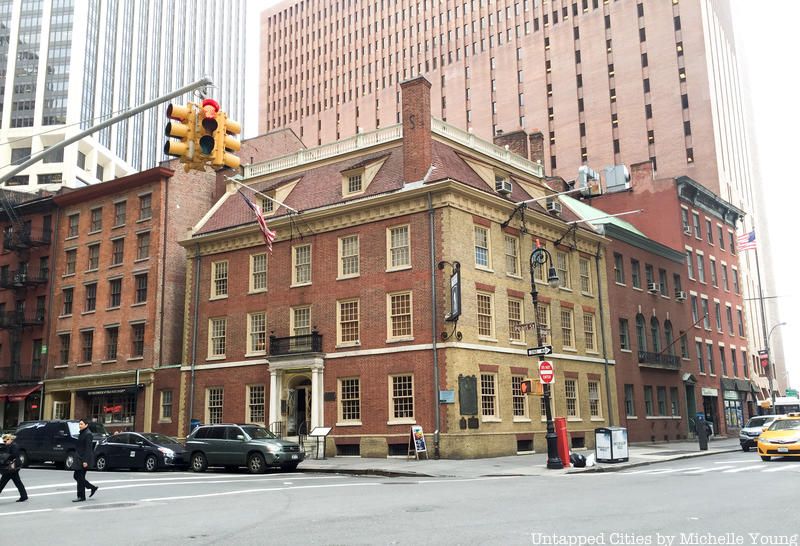 Fraunces Tavern in New York City
Fraunces Tavern in New York City
Beer has been a part of New York City’s history from the very beginning and some of the oldest surviving bars date to the early 19th century. Here are ten fun historical facts about the beer industry here in New York City.
10. The US Beer Industry Had Its Start in New York
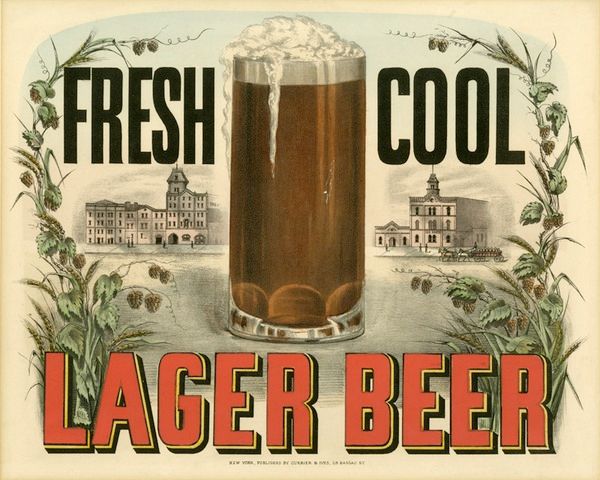
Image from New-York Historical Society exhibit Beer Here: Brewing New York’s Beer History
As shown in the 2012 New-York Historical Society exhibit “Beer Here: Brewing New York’s Beer History“, from the “1840s through the 1880s the state was the largest producer of hops in the United States.” Even before that, there was a tradition of home-brewing and local beer production – which makes the resurgence of New York-area microbreweries in the last decade less than surprising.
9. It Was Once Considered Safer to Drink Beer Than the Water in NYC
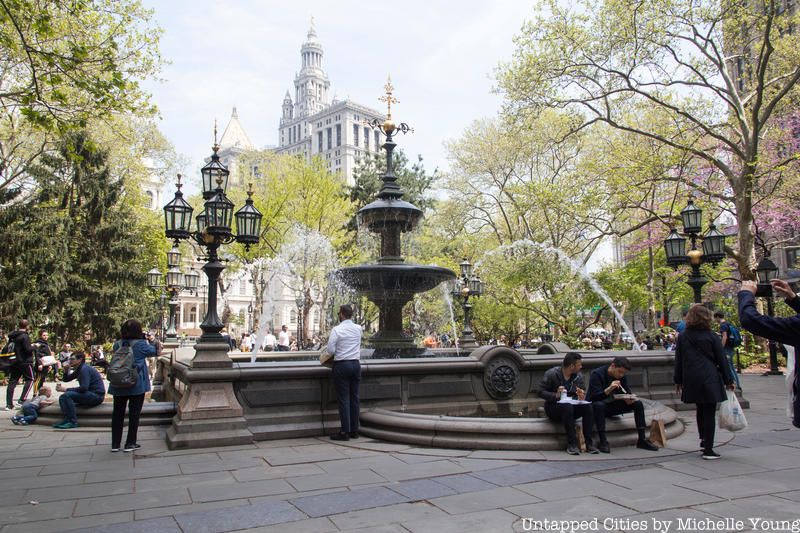
The Croton Aqueduct was completed in 1842 and as proof of the extent of the feat, the celebration of its opening lasted all day with a 50-foot fountain of water in City Hall Park. Prior to that, “beer was considered safer to drink than water” said Beer Here curator Debra Schmidt Bach.
8. The East Side of Manhattan Was Once Full of Breweries
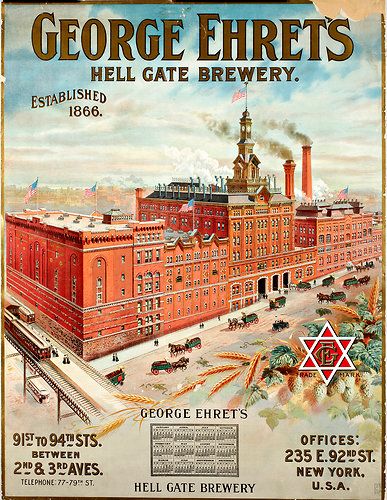
Image via New-York Historical Society
The waterfront on both sides of the East River in Manhattan and Brooklyn were full of breweries. By the mid 1800s, the Turtle Bay cove had been infilled and was packed with breweries, slaughterhouses, industrial uses and slums, and was one of the most polluted places in the city. This land would be purchased and redeveloped into the United Nations. George Ehret, at one point the largest brewer in the country, opened in 1866 uptown at 92nd Street. Even further inland, Carnegie Hall was built on the land of a former brewery.
7. The Company That Invented the Bottle Cap Was Headquartered in NYC
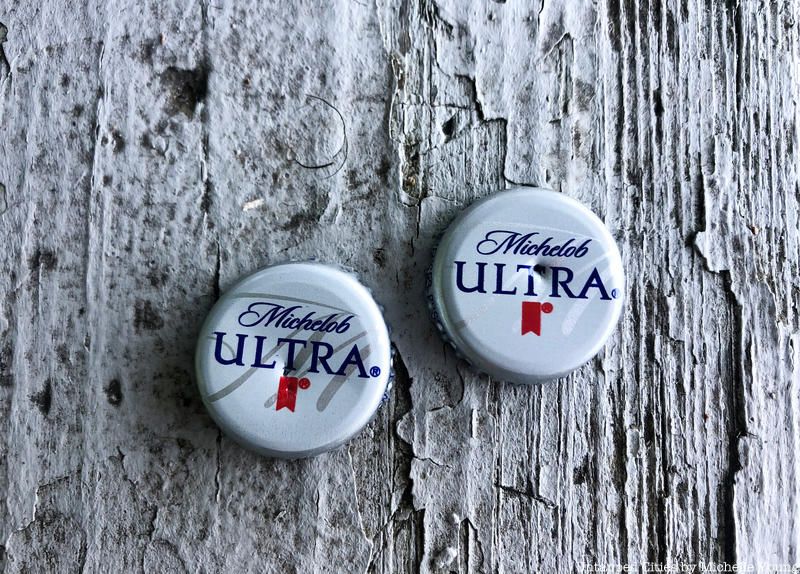
Although New York City can’t claim to be the location where the bottle cap was invented – William Painter’s invention and his Crown Cork and Seal Company started out in Baltimore in 1891 – but the company was based in New York City starting in 1927 after merging with the New Process Cork Company. The company still exists but is located in Philadelphia now. The bottle cap, first known as “Crown Cork” revolutionized the trade and transportation of beer.
6. There Was a Cooperative Brewing Company in New York
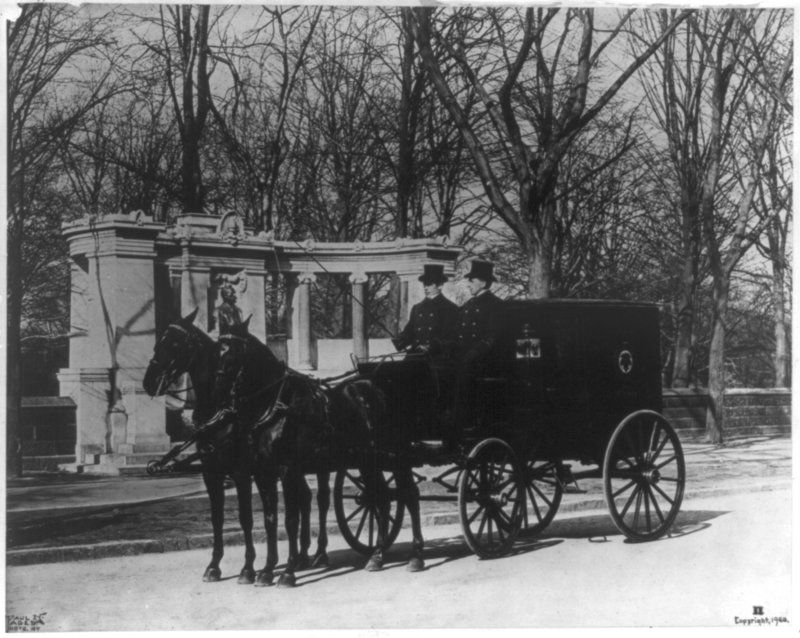
A beer delivery wagon for Pabst company on Fifth Avenue near 70th Street. Photo from Library of Congress.
The Consumers’ Brewing Company of New York was a cooperative company, and as recounted in a 1908 report, one of the largest of its kind in the United States supplying an “annual demand of over 250,000 barrels” with a staff of 120 people. Above is its brewery on 54th Street which the New York Times described architecturally as a “tipsy extravaganza of mansards, towers and a great central dome.” In Brooklyn, a similar endeavor, the Consumers Park Brewing Company was formed by a group of hotel and saloon keepers and remnants can still be seen today.
5. The Lost Bull’s Head Tavern Was Almost Saved

Image from New York Public Library
The Bull’s Head Tavern at 50 Bowery was not only a significant Revolutionary war-era locale, visited by George Washington (also possibly one of his headquarters), it later became Atlantic Garden, a prominent German beer hall. During the 2014 demolition, its colonial history was unearthed in the basement and an ultimately unsuccessful preservation campaign was launched to save it. Today, a hotel is rising in its place, though it is said that the developer has saved the wood from the cellar for future display or incorporation.
4. There Are Prohibition Beer Caves Are Still in the Bronx

Eblings Breweries in the Bronx. Image from Wikimedia Commons.
During one of Mayor Bloomberg’s major rezoning efforts in 2009 came a quirky find in the Melrose section of the Bronx. Deep under the ground were several Prohibition-age beer caves belonging to the Ebling Brewery. The Ebling Brewing Company, which was located on 156th Street and St. Ann’s Avenue in the Bronx, was one of the breweries hit hard by Prohibition. They were shut-down for a period due to higher-than-normal alcohol content in a truckload of beers and were ultimately closed in the 1940s. The beer caves were forgotten until sixty years later, as crews were laying the groundwork for the affordable housing that currently sits on the location of the old brewery.
3. The New York Public Library Has George Washington’s Recipe for Beer

Located in the New York Public Library Manuscripts and Archives Division is George Washington’s “Recipe for Small Beer” from his 1757 notebook.
Here are the instructions:
Take a large Sifter full of Bran Hops to your Taste — Boil these 3 hours. Then strain out 30 Gall. into a Cooler put in 3 Gallons Molasses while the Beer is scalding hot or rather drain the molasses into the Cooler. Strain the Beer on it while boiling hot let this stand til it is little more than Blood warm. Then put in a quart of Yeast if the weather is very cold cover it over with a Blanket. Let it work in the Cooler 24 hours then put it into the Cask. leave the Bung open til it is almost done working — Bottle it that day Week it was Brewed.
2. Peter Stuyvesant Rules for Drinking Responsibly
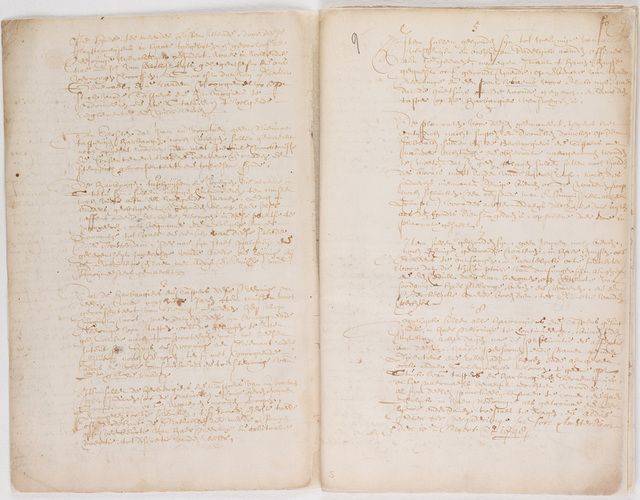
Image via New York City Department of Records & Information Services
Drinking was already a problem in the early days of the Dutch colony, with taverns accounting for about 1/4 of the city. Furthermore, drinking was seen as negatively impacting civilian order, and the morals and virtues of the youth. When Peter Stuyvesant arrived, he is said to have “found himself in an undisciplined settlement where drunkenness and fighting prevailed,” reports the New York City Department of Records & Information Services (which digitized the records of New Amsterdam). Stuyvesant first bans the sale of alcohol on Sundays before 2 pm, and follows it up in 1648 with an ordinance on drinking. These are the earliest government records that the New York City archive has. The rules are as follows:
1. Henceforth no new taproom, tavern or inn shall be opened…
2. The taverns, taprooms and inns, already established, may continue for at least four consecutive years, but in the meantime the owners shall be obliged to engage in some other honest business at this place….
3. The tavern-keepers and tapsters are allowed to continue In their business for four years at least, but only on condition, that they shall not transfer their former occupation….
4. Item the tavern keepers and tapsters shall henceforth not be allowed, to sell or give beer, wine, brandy or strong waters to Indians or provide them with it by intermediaries….
5. To prevent all fighting and mishaps they shall daily report to the Officer, whether anybody has been hurt or wounded at their houses, under the penalty of forfeiting their business and a fine of one pound Flemish for every hour after the hurt or wound has been inflicted and been concealed by the tapster or tavern-keeper.
6. The orders, heretofore published against unseasonable night tippling and intemperate drinking on the Sabbath, shall be obeyed by the tavern-keepers and tapsters with close attention….
7. They shall be held, not to receive any beer or wine or distilled waters into their houses or cellars, directly or indirectly, before they have so reported at the office of the Receiver….
8. Finally, all tavern-keepers and tapsters, who intend to continue in their occupation, shall eight days after the publication hereof present themselves in person and give their names to the Director General and Council and there solemnly promise, that they will faithfully obey, what rules have been or may be made…. March 10, 1648.
1. Ale Was Deemed “The Proper Drink for Americans” in 1788
 Fraunces Tavern in New York City
Fraunces Tavern in New York City
At a large parade to celebrate the New York State ratification of the United States constitution in 1788, twenty brewers partook with the motto “Ale, proper drink for Americans.” One of the brewers’ flags was emblazoned with the phrase “May he be choaked with the grains, or drowned in hot ale whose business it is to brew mischief.” It is telling that a tavern, Fraunces Tavern, pictured above in its current state, was the seat of the Confederation Congress after the American Revolution.
Next, see 10 of the oldest surviving bars in NYC and 12 of NYC’s top microbreweries today.


